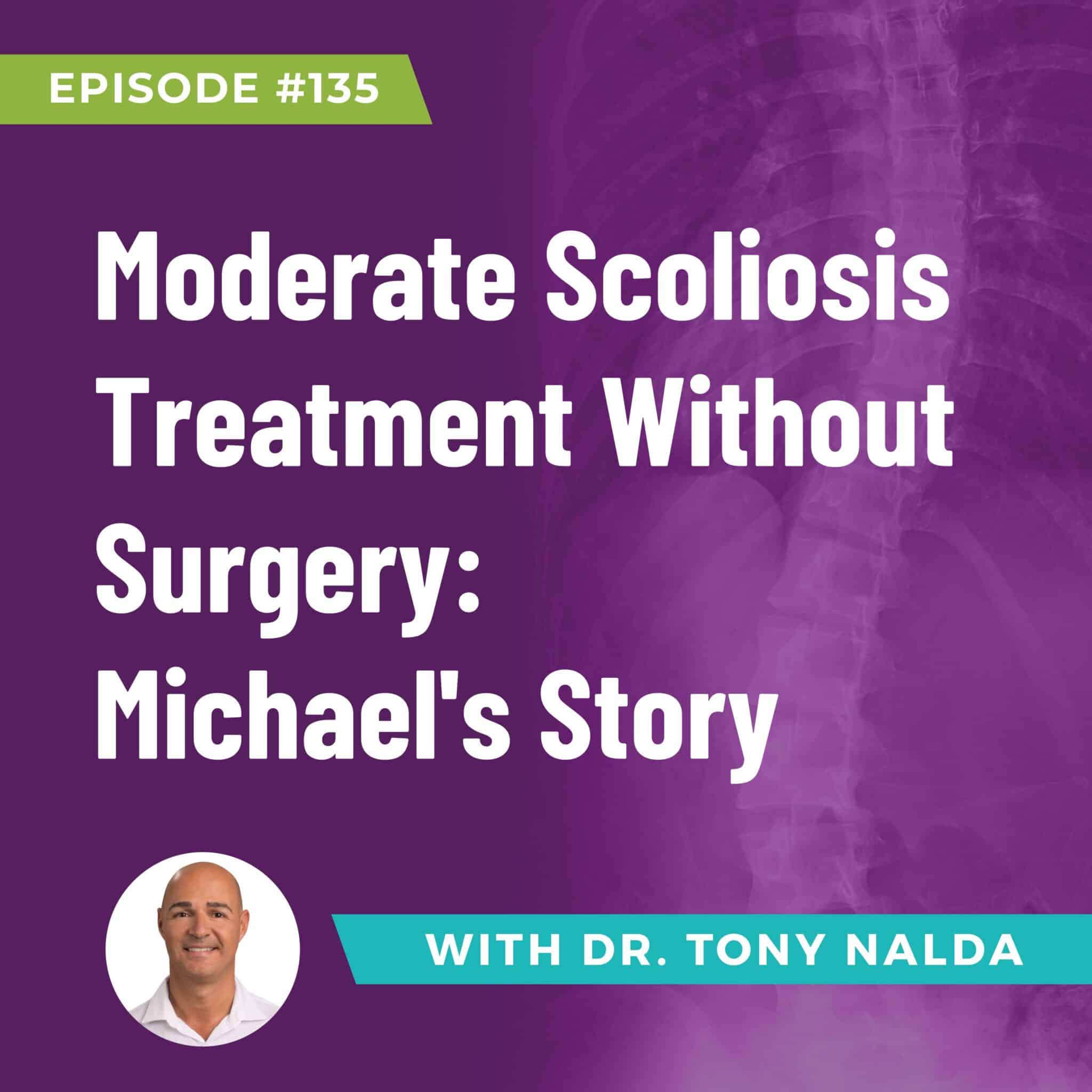Episode 135: Moderate Scoliosis Treatment Without Surgery: Michael's Story
Michael's Journey: From Misdiagnosis to Effective Scoliosis Management
In today’s podcast episode, we explore the unique and challenging journey of Michael, a young boy whose scoliosis story exemplifies the difficulties and complexities associated with diagnosing and effectively managing this condition.
Early Signs and Misdiagnosis
- Initial Concerns: Michael’s journey began with knee pain and difficulty walking, rather than the typical signs of scoliosis. His discomfort was so severe that even enjoyable activities like visiting Disney World were not appealing to him.
- First Diagnosis: Initially, orthopedic specialists attributed Michael’s symptoms to his knees and suggested physical therapy, which proved ineffective.
The Progression of Scoliosis
- Rapid Curve Progression: Over nine months, Michael’s scoliosis rapidly progressed from a mild 8-degree curvature to nearly 30 degrees. This unexpected worsening highlighted the unpredictable nature of scoliosis progression, particularly in growing children.
Treatment Challenges and Alternatives
- Inadequate Solutions: Initially offered a Providence brace, Michael's family was skeptical due to mixed success rates. The looming suggestion of surgery as the next step prompted them to seek alternative treatments.
- Growth and Progression Risk: Michael’s case underscores the inherent risk of progression in adolescent scoliosis, driven by growth spurts that cannot be halted.
Turning Point and Alternative Approach
- Discovering Dr. Tony: At a critical juncture, a family friend introduced Michael’s family to Dr. Tony and his non-surgical approach to scoliosis management.
- Comprehensive Treatment: Dr. Tony’s method involved a rigorous but manageable routine of specific exercises tailored to Michael’s unique curvature, alongside a gradual reduction in brace wear—from 23 hours initially down to 8 hours.
Impact of Targeted Non-Surgical Treatment
- Significant Improvement: Through consistent participation in a specialized exercise program and adherence to the bracing protocol, Michael experienced substantial improvements. His curvature decreased to under 10 degrees, effectively bringing him out of the scoliosis threshold.
- Holistic Care: Beyond just addressing the spinal curvature, Dr. Tony’s treatment also improved Michael’s overall musculoskeletal health, including his knees and gait.
Broader Implications
- Neuromuscular Considerations: Michael’s broader symptoms suggested a possible neuromuscular component to his scoliosis, which was also addressed through the comprehensive care plan, underscoring the importance of a holistic approach to treatment.
Conclusion
Michael’s story is not just one of overcoming a physical condition but also highlights the critical importance of accurate diagnosis, the potential pitfalls of conventional treatment paths, and the effectiveness of personalized, non-invasive management strategies. His journey from near surgical intervention to a significantly improved quality of life offers hope and valuable insights for other families navigating similar challenges.
For more inspiring stories and expert advice on managing scoliosis, subscribe to our podcast and visit the Scoliosis Reduction Center's website. If you're looking for resources or need guidance on scoliosis treatment options, don't hesitate to reach out and explore what's possible beyond traditional surgical approaches.
Musicbed SyncID: MB01DPQCDJHCYFI
Podcast: Play in new window | Download
Subscribe: RSS
Dr. Tony Nalda
DOCTOR OF CHIROPRACTIC
After receiving an undergraduate degree in psychology and his Doctorate of Chiropractic from Life University, Dr. Nalda settled in Celebration, Florida and proceeded to build one of Central Florida’s most successful chiropractic clinics.
His experience with patients suffering from scoliosis, and the confusion and frustration they faced, led him to seek a specialty in scoliosis care. In 2006 he completed his Intensive Care Certification from CLEAR Institute, a leading scoliosis educational and certification center.
About Dr. Tony Nalda
 Ready to explore scoliosis treatment? Contact Us Now
Ready to explore scoliosis treatment? Contact Us Now








